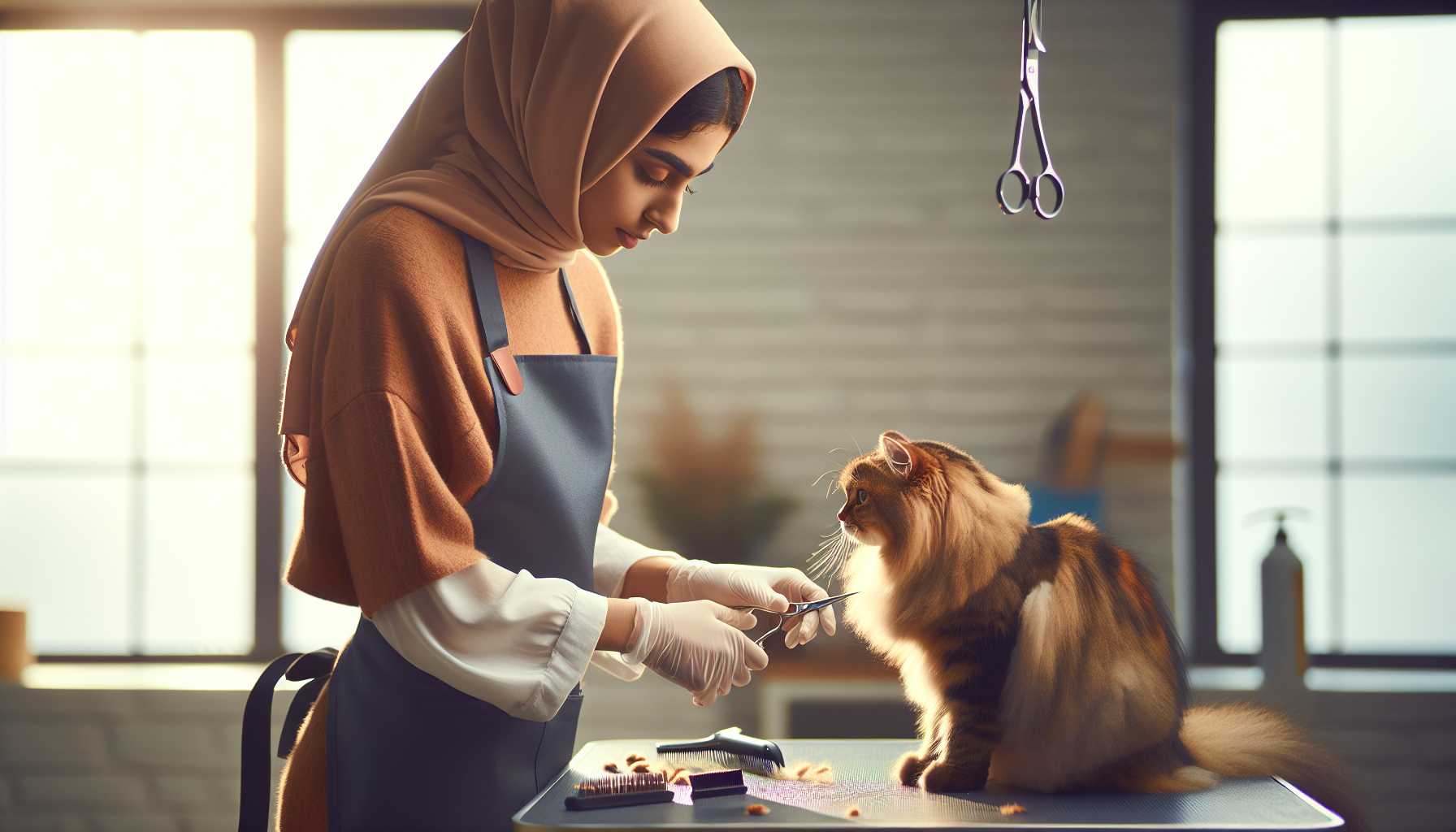Cat Sanitary Trimming: Safe Home Grooming Guide

Understanding Cat Sanitary Trimming
Sanitary trimming is the process of carefully trimming the fur around your cat's sensitive areas. It includes parts like the base of the tail, the rear end, and the area between their back legs. Think of this as a hygiene-enhancing haircut for your furry buddy!
The Need for Sanitary Trimming in Cats
Every cat owner wants a clean and hygienic pet. Regular sanitary trims can help prevent various issues such as: - Fur matting around sensitive areas. - Litter particles clinging onto the fur. - Unpleasant odors. - Potential skin infections. - Distress during bathroom visits.
Must-Have Tools for Sanitary Trimming
Before you begin, ensure you have these essential tools: - Small round-tip scissors. - Pet-specific grooming clippers. - Cat grooming brush. - Lots of treats (For distraction). - A clean towel. - Pet wipes for cleaning.
Making Your Cat Comfortable Before Grooming
Just like humans, cats require a certain level of comfort before grooming. Here's how you can ensure this: 1. Opt for a quiet, well-lit room. 2. Allow your cat to familiarize itself with the grooming tools. 3. Provide treats and gentle strokes for reassurance. 4. Speak softly to your cat. 5. Never rush the grooming process.
Techniques for Safe Trimming
When trimming, take it slow and make sure you are gentle: - Hold your cat carefully but securely. - Use your non-dominant hand to pull back any loose skin. - Keep the scissors parallel to the skin and avoid pointing them directly at your cat. - Make small and cautious cuts. - Be mindful of any signs of discomfort. - Pause the process when necessary.
Focal Points While Trimming
While trimming, concentrate on these areas: - The base of the tail. - The underside of the tail. - Between the back legs. - The belly region. - The rear area.
When to Seek Professional Assistance
In certain situations, it's best to reach out to a professional groomer: - If the fur is severely matted. - If your cat is unusually aggressive or excessively anxious. - If your cat has certain skin conditions. - If you're feeling unconfident. - If your cat is senior aged with particular health issues.
Post-Trimming Care
After the trim, it's the perfect time to shower your kitty with some extra affection: - Reward them with their favorite treats. - Gently brush to remove any loose fur. - Clean the cut area with pet wipes. - Watch closely for any signs of irritation. - Praise your cat generously!
Recommended Schedule for Regular Maintenance
To keep your cat comfortable, follow these tips on how often to groom: - Check on grooming needs every week. - Schedule the trim every 4-6 weeks. - Adjust the schedule based on your cat’s fur length. - Groom more frequently during their shedding seasons.
It's important to remember that every cat is unique! Depending on their breed, lifestyle and health condition, some cats may require more frequent grooming than others. Watch your furry friend's behavior and adjust your grooming routine as needed. With regular patience and practice, sanitary trimming can become a wholesome bonding experience shared by you and your pet.